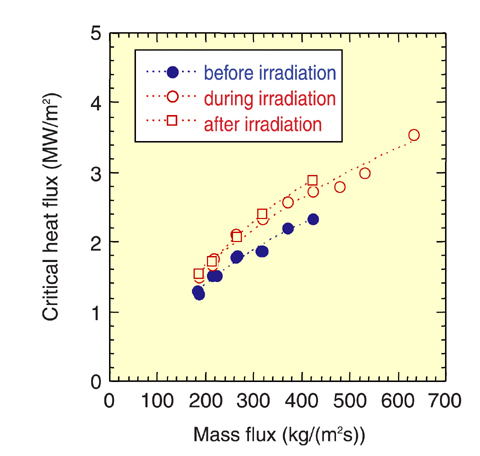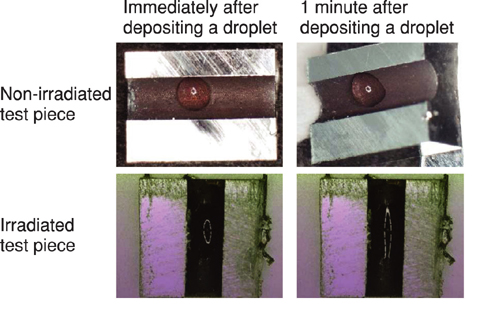
Fig.5-9 Comparison of critical heat flux

Fig.5-10 Water droplet contact condition on test piece
The Radiation Induced Surface Activation (RISA) effect is now drawing significant research interest because it may enhance the wettability and coolability of an irradiated surface. The RISA effect, caused by the photochemical activation of an oxidized metal surface by heavy irradiation, was discovered recently. A large amount of a cumulative irradiation dose is required for the effect to appear. The heavy irradiation environment in a nuclear reactor should effectively improve the wettability and coolability, especially on the fuel rod surface. We have conducted an experimental study using the Japan Materials Testing Reactor "JMTR" in JAEA to investigate the applicability of the RISA effect to enhance heat removal under critical cooling conditions.
Boiling Water Reactor (BWR) is designed so that the fuel rod surface is always covered with continuous liquid film to prevent the excessive increase of surface temperature that occurs when there is depletion of liquid film, so-called dryout, which may pose a threat to fuel integrity. The maximum thermal power, at which a thin liquid film can exist on the fuel rod surface, is defined as the critical power in the thermal hydraulic design, which determines the operational power range of BWR.
The critical heat flux (CHF), defined as the critical power for a unit area of fuel rod surface, is usually evaluated by empirical correlations based on the extensive experimental data. In a recent experiment, it was learned that the CHF is dependent on the surface properties including the wettability. If the critical power is increased by the wettability enhancement due to the RISA effect, it may provide an additional margin to the nuclear fuel design and should be favorable for operational power uprate. The previous research on the RISA effect using small irradiation facilities did not provide experimental evidence for increasing the CHF in the forced flow boiling condition.
Our experiments tested a water up-flow through a small diameter channel concurrent with gamma and neutron irradiation in the JMTR. These experiments were unique in that they dealt with forced flow boiling, rather than pool boiling, and were conducted under radiation dose rate and spectrum similar to those in the core of commercial BWRs. The test section had a 2-mm diameter flow channel and was heated electrically. Quasi-steady state experiments were conducted before irradiation (out-of-pile and in-pile before reactor operation), during irradiation and after irradiation (in-pile), under the same thermal hydraulic conditions using the same test section. This approach allowed direct evaluation of the RISA effect through comparison of experimental data.
The results are plotted against the mass flux in Fig.5-9. The CHF obtained during and after irradiation was larger by about 17%, on average, than that before irradiation. Fig.5-10 shows the observation of static spread of a liquid droplet put on the surface of the test piece, which was a part of the flow channel, before and after the irradiation. A super-hydrophilic state was achieved after the irradiation in JMTR, while a droplet remains in the original form for non-irradiated test piece.
In this way the RISA effect was confirmed for the first time in the case of forced convection boiling heat transfer on a metal oxide surface. The next stage experiment, under nearly real plant conditions, high pressure, high mass flux, and high heat flux, is being planned.